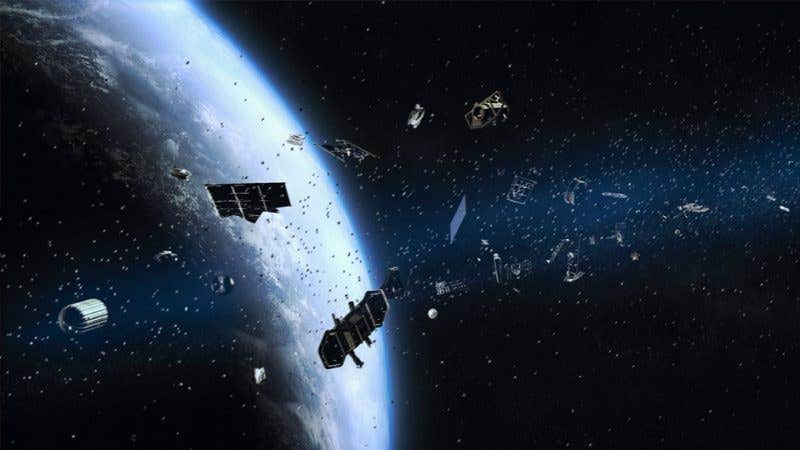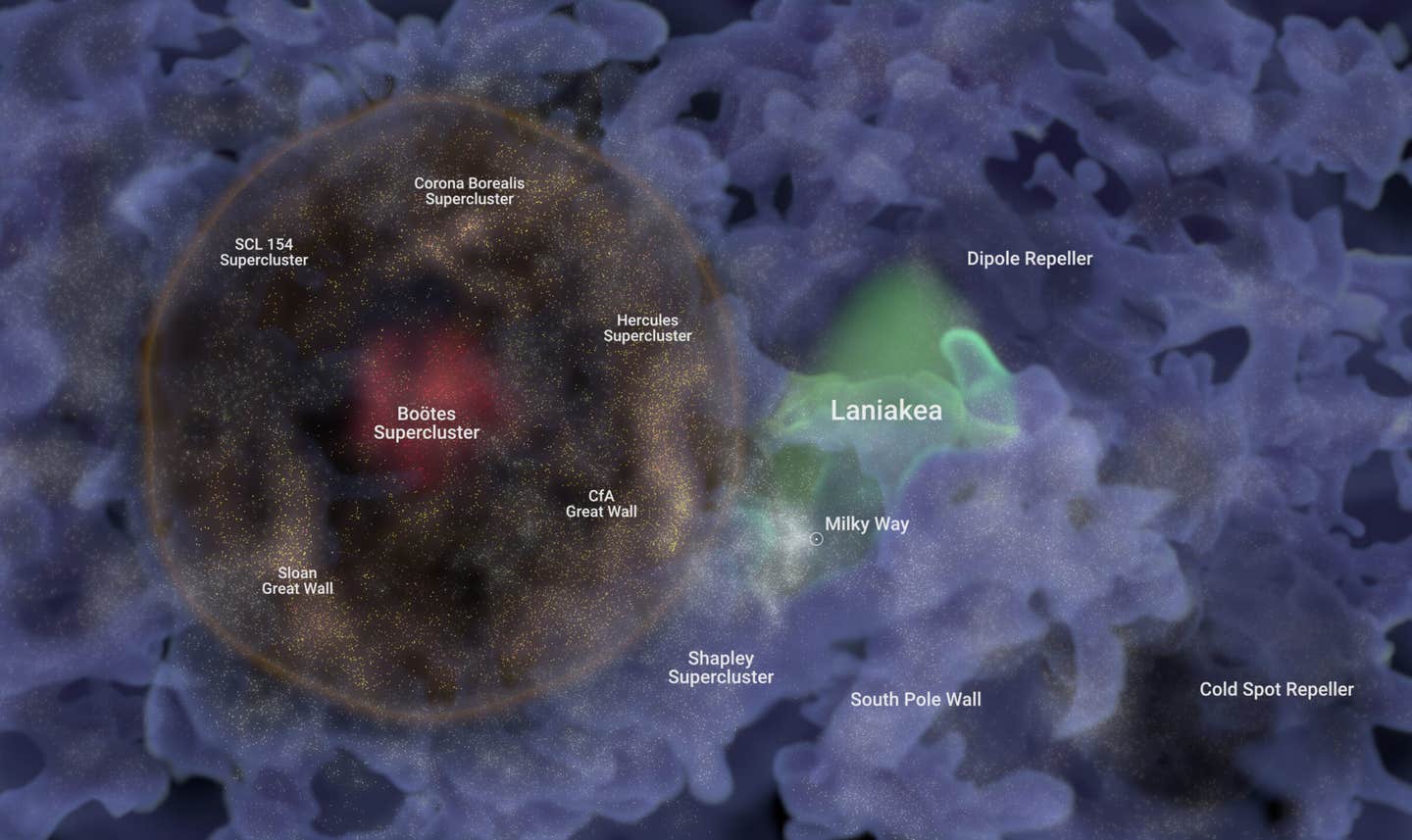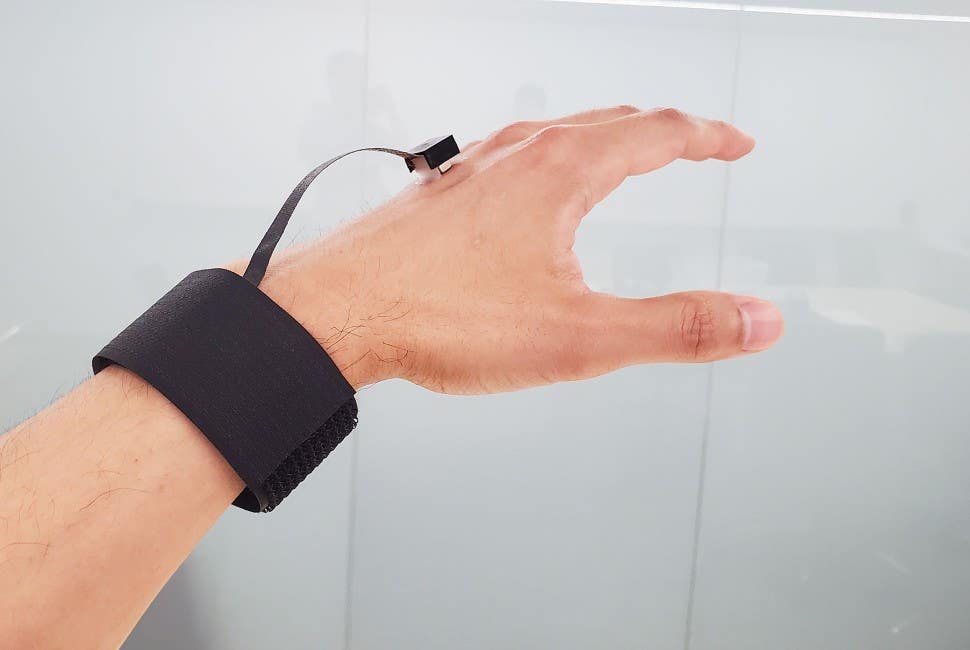Spinning magnets could be the answer for NASA’s orbital space debris problem
According to NASA, there are more than 27,000 pieces of space debris bigger than the size of a softball currently orbiting Earth.

[Oct 31, 2021: University of Utah]
There are more than 27,000 pieces of space debris bigger than the size of a softball currently orbiting Earth. (Credit: Creative Commons)
Space has become a trash heap.
According to NASA, there are more than 27,000 pieces of space debris bigger than the size of a softball currently orbiting Earth, and they are traveling at speeds of up to 17,500 mph, fast enough for a small chunk to damage a satellite or spacecraft like an intergalactic cannonball.
Consequently, cleaning up this space junk will be an important task if agencies are to shoot more rockets and satellites into orbit. University of Utah mechanical engineering professor Jake J. Abbott is leading a team of researchers that has discovered a method to manipulate orbiting debris with spinning magnets. With this technology, robots could one day gently maneuver the scrap to a decaying orbit or further out into space without actually touching it, or they could repair malfunctioning objects to extend their life.
Their research is detailed in the paper, “Dexterous magnetic manipulation of conductive non-magnetic objects,” published this month in the science journal, Nature. The co-authors include U graduate students Lan Pham, Griffin Tabor and Ashkan Pourkand, former graduate student Jacob L. B. Aman, and U School of Computing associate professor Tucker Hermans. You can read a copy of the paper here.
The concept involves moving metallic, non-magnetized objects in space with spinning magnets. When the metallic debris is subjected to a changing magnetic field, electrons circulate within the metal in circular loops, “like when you swirl your cup of coffee and it goes around and around,” says Abbott.
The process turns the piece of debris into essentially an electromagnet that creates torque and force, which can allow you to control where the debris goes without physically grabbing it.
In this numerical simulation, we manipulate a copper sphere using six dipole-field sources that surround the object. Our goal is to move the copper sphere along the edges of a cube while maintaining its orientation constant. This requires us to control all three force degrees of freedom and all three torque degrees of freedom. Our method only utilizes one field source at a time, which we depict by highlighting the active field source. (CREDIT: University of Utah)
While the idea of using these kinds of magnetic currents to manipulate objects in space is not new, what Abbott and his team have discovered is that using multiple magnetic-field sources in a coordinated fashion allows them to move the objects in six degrees of movement, including rotating them. Before, it was only known how to move them in one degree of movement, like just pushing them.
Related Stories
“What we wanted to do was to manipulate the thing, not just shove it but actually manipulate it like you do on Earth,” he says. “That form of dexterous manipulation has never been done before.”
With this new knowledge, scientists for example could stop a damaged satellite from wildly spinning in order to repair it, something that would not have been possible before.
“You have to take this crazy object floating in space, and you have to get it into a position where it can be manipulated by a robot arm,” Abbott says. “But if it’s spinning out of control, you could break the robot arm doing that, which would just create more debris.”
This method also allows scientists to manipulate objects that are especially fragile. While a robot arm could damage an object because its claw applies force to one part of it, these magnets would apply a gentler force to the entire object so no one section is harmed.
To test their research, the team used a series of magnets to move a copper ball on a plastic raft in a tank of water (the best way to simulate slow-moving objects in microgravity). The magnets moved the sphere not only in a square, but they also rotated the ball.
Abbott says this newly discovered process could be used with a spinning magnet on a robotic arm, a stationary magnet that creates spinning magnetic fields, or a spinning super-conductive electromagnet like those used in MRI scanners.
Abbott believes this principle of manipulating non-magnetic metallic objects with magnets could also have applications beyond the clearing of space debris.
“I’m starting to open my mind to what potential applications there are,” he says. “We have a new way to apply a force to an object for precise alignment without touching it.”
But for now, this idea could immediately be applied to help fix the problem of space junk orbiting the Earth.
“NASA is tracking thousands of space debris the same way that air traffic controllers track aircraft. You have to know where they are because you could accidentally crash into them,” Abbott says. “The U.S. government and the governments of the world know of this problem because there is more and more of this stuff accumulating with each passing day.”
To read a more detailed description on this research, click here. To hear a Nature podcast featuring Abbott talking about the project, click here.
Like these kind of feel good stories? Get the Brighter Side of News' newsletter.
Tags: #New_Innovations, #Robotics, #Space, #Satellites, #Debris, #Technology, #The_Brighter_Side_of_News
Joseph Shavit
Head Science News Writer | Communicating Innovation & Discovery
Based in Los Angeles, Joseph Shavit is an accomplished science journalist, head science news writer and co-founder at The Brighter Side of News, where he translates cutting-edge discoveries into compelling stories for a broad audience. With a strong background spanning science, business, product management, media leadership, and entrepreneurship, Joseph brings a unique perspective to science communication. His expertise allows him to uncover the intersection of technological advancements and market potential, shedding light on how groundbreaking research evolves into transformative products and industries.



